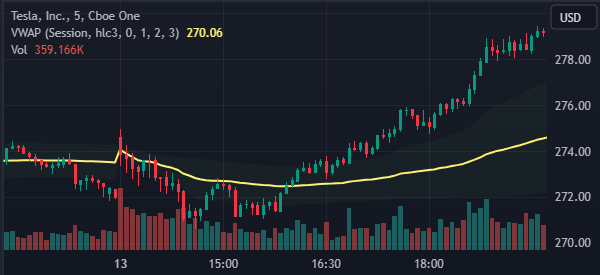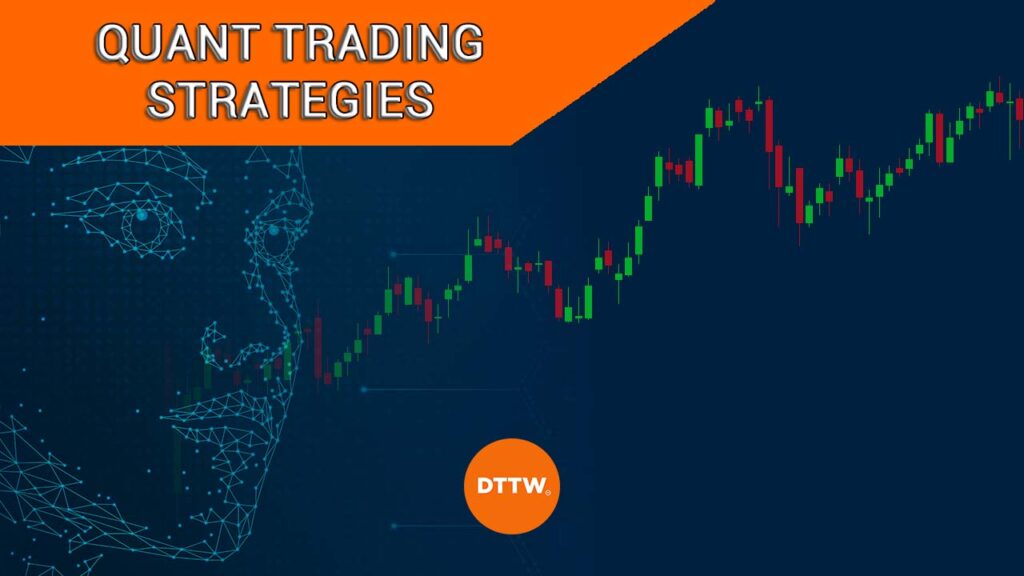There are many strategies traders and investors use to make money. These strategies are designed to maximize the Return on Investment (ROI) of the traders.
For instance, a number of traders use technical analysis while others use fundamental principles to trade. Other traders, instead, combine the two strategies.
In this article, we will introduce the quantitative trading technique which is used by a number of traders.
From the onset, this strategy is a bit complicated especially to new traders. It is also a bit complicated for traders with no experience in programming languages such as MATLAB and Python.
For traders with this background, creating a quantitative technique can help them achieve success within a very short period of time.
In quant trading, a trader needs to follow four key strategies:
- formulating a strategy
- strategy backtesting
- execution
- risk management
Let’s analyze them.
What is quantitative trading?
Quantitative trading is a strategy that focuses on mathematical calculations and models. It is also known as algorithmic trading since the trader uses models to analyze trends and identify opportunities in the market.
Quantitative trading is widely used by many large hedge funds like Renaissance Technologies and Two Sigma. It is also being used by many retail traders who create or buy robots.
Quantitative models can be simple or highly complicated. An example of a simple quant model is one that directs the broker to buy an asset when it moves above two moving averages. A complex one can involve tens of indicators and other sentiment data.
How to create quant models
The process of creating quant models in day trading can be highly complicated and a few people can create them. For one, it is important for one to have experience of both day trading and coding.
There are three main ways of using quant models in day trading. First, you can build your model from scratch. This is a process where you use your trading experience to build your own algorithm. Depending on your experience, it can take you a few weeks to do that.
Second, you can use one of the many robot builders that are available in the market. These platforms provide an easy tool where you can build your bots. At times, they let you use a drag and drop option to create the tool.
Finally, you can buy a bot online. There are many places where you can buy a quant bot easily. One of the most popular websites is owned by MetaQuotes, the company that owns MT4 and MT5. The benefit of using its platform is that you can read user reviews before you buy it.
Steps to follow to create a quant strategy
Formulation or identification of strategy
In this stage, the goal is to find a good strategy that suits you, exploiting the edge and then deciding on the trading frequency.
This is the stage where research is very important because it encompasses the strategy, seeing whether the strategy will fit into your portfolio, getting the required data to test the strategy, and optimizing the strategy.
This is simply because it will help you maximize returns and minimize the amount of risk involved in trading.
As a retail trader, you need to examine your capital requirements and how the allocation will affect your strategy (as we said, research is very important).
Luckily, there are many online resource sites that can help you in research. A good source is Seeking Alpha which presents research from thousands of traders, investors and researchers.
Another good place to find this information is the investor market place which is provided by interactive brokers.
Two key areas of strategies will fall into mean-reversion and trend-following strategies.
The former strategy attempts to use the long-term mean of prices of assets. A good example is the spread between two correlated assets and standard deviations among the assets. The latter looks at a trend with the aim of buying at the bottom and selling on the top.
Another key strategy you can take advantage of is on the frequency. This should be done with the timing of your strategy in mind.
Low frequency strategies should be done for traders who wish to hold positions for long periods while high frequency trades should be good for traders aiming to trade for short periods.
→ Perfecting High Frequency Trading
Strategy backtesting
No strategy should be applied in trading without backtesting. In backtesting, the goal is to establish whether a strategy applies to historical data.
First, you need to find historical data which is available from many vendors. As a trader with a small account, Yahoo finance can help you. Alternatively, the best vendors are Bloomberg and Reuters.
The historical data that you use should factor in 3 main issues: accuracy, survivor bias, and corporate actions. After finding the data, backtesting should be done using a good and credible software such as MATLAB, Excel and trade station. Backtesting will help you assess the applicability of the strategy.
Execution system
An execution system is the platform which will execute trades based on the strategy that you have developed. The system can be automatic, semi-automatic, or manual.
When creating the execution system, it is important to consider the interface of your broker, the transaction costs, and the divergence performance.
By making these considerations, you will be at a good place to have a good and credible system that has been backdated efficiently.
Risk Management
Risk management is a very important aspect for you to consider in quantitative trading. This is because the strategy is not always perfect. In fact, in the past, many quantitative hedge funds have been closed because of the massive losses.
Therefore, it is important to have a good risk management strategy.
One strategy this happens is through the Optimal Capital Allocation which is a branch of portfolio theory. It basically states that funds must be allocated in assets which gives it the maximum returns.
The second strategy you must always have in mind deals with psychology. Trading psychology is very important because losses can lead to serious psychological issues. Many people have committed suicide while others have gotten into suicide for failure to maintain losses.
→ How to restart after a big loss
Top quant trading strategies
Statistical arbitrage
Arbitrage is a trading strategy that seeks to benefit from a spread of two trades. For example, assume that two stocks are highly correlated with each other. In this case, when you buy the two of them, you will make a profit if their prices rise and vice versa.
In arbitrage, you can place a big buy of one stock and short the other one. In this case, if the two stocks rise, your bullish trade will be profitable while the other one will make a loss. The profit will be the spread between the two.
Mean reversion
This is a relatively simple concept that argues that an asset will often return to its normal trend when it makes a strong move.
For example, in the chart below, we see that Tesla shares jumped sharply above the VWAP indicator. In this case, a quant trader can create a model that shorts the stock hoping that it will fall back to the VWAP indicator.


Trend following
This is a strategy that takes advantage of existing trends. The approach lets a trader buy an asset that is already rising and then short one that is moving downwards. The idea is that the asset will continue moving in an existing trend.
One way of playing the trade following strategy is to use two moving averages. In this case, you can set the algorithm to initiate a buy trade when it moves above the 50-day moving average.
Summary
As seen in the above chapters, quantitative trading is a very complicated area but one that is very interesting. Many brokerages provide investors with platforms for algorithmic trading. These platforms help the traders build up their strategies and implement them.
If you have the time, quantitative trading can be very rewarding. In addition, quant is not always perfect. Therefore, having a good psychological edge can help you minimize losses.
Other resources that could help you in Quantitative Trading
- Beginner’s Guide to Quantitative Trading – Quantstart
- Quantitative Trading Definition – Investopedia
